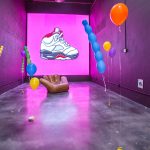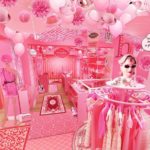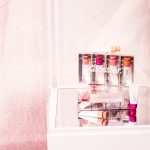We now live in the experience age, where consumers of all ages, especially millennials, are opting to spend their money seeking out and participating in experiences, rather than products as the generations before them did. One low-risk method of getting on the experience bandwagon, especially for digital-only brands, is to invest in a pop-up shop or pop-up retail store.
Pop-up shops or stores can be a great way to extend your reach into new markets and put yourself in front of experience-seeking customers in the physical world. Here are some things to keep in mind as you start the process.
- Establish Success Metrics Beforehand
What do you want to get out of customers experiencing your product in the real world? Do you want them to know your digital brand exists? Test a new market? Learn about specific new products or services? Will the pop-up shop exist simply to generate leads? Generate revenue? Having clear goals for the pop-up store experience will help you better access its success or failure at the end of its run.

- Define Your Key Value Drivers
There are different ways to measure success once you decide what your key value drivers are and are open to learning new data and insights about which products are popular, at what price, and which messages are most effective. If you want to see if there is a difference between what your customers buy online versus in a store experience, then track correlations across product, location and price. Whatever you decide, either a single key value driver or a combination, establish your protocols before the pop-up shop opens so you don’t miss out on any valuable customer data and insights.
- Use the Digital to Promote the Physical
Email marketing, social media and blog posts should be used to let current and potential customers learn about your pop-up store. But don’t just stop there. Can other digital technologies such as virtual reality, augmented reality, or digital projection be used at the pop-up store itself to increase the “wow” factor? Capture the experience customers are having at your pop-up then with a follow up automated email or iMessage souvenir of their photo from the photo booth can be a great way to increase the buzz around your store and get prospective customers active and engaged.
- Don’t Forget What You’ve Already Learned
A pop-up store, while unique in its potential, is still a channel just like any other. Many of the same rules still apply. Its existence must be promoted, including basic details like where it’s located and what its hours of operations are. A staff must be hired and trained. If there is any special equipment being used at the pop-up, like virtual reality (VR) goggles, then they need to be trained on that as well. Plan out how crowds will move through your space. How will the pop-up be restocked? How will garbage be disposed of? Will the pop-up store be able to process returns, or is that all done online? Paying careful attention to these little details can make the difference between the success or failure of the pop-up experience.
Remember, you are in essence creating your own little world focused on your brand. The more fleshed out the world is, the more immersive your world is, the more likely your customers will want to stay and even come back for more.
- Embrace the Experience
Don’t waste the opportunity to get creative and really bring your brand and your brand story to life.If you are an outdoor clothing brand, let your customers try your products while enjoying a climbing wall. Do you sell power tools? Set up a working workshop in your pop-up so customers can actually make something with your product. Customers can already see pictures of your product and read about your company online. Use the pop-up experience to create a tangible relationship between you and your customers.
- Be a Scientist
Using the metrics and tracking you set up ahead of time, use your pop-up shop to test as many hypotheses as you can during its run. Do certain products sell better on certain days of the week? Did general information e-blasts trigger more visits to the pop-up, or did e-blasts that promoted certain products produce more foot traffic? Did certain sales associates thrive in the pop-up environment compared to others? Did the pop-ups location near particular existing retail or transportation hubs seem to help or hurt it? The answers to these questions can be rolled into future marketing initiatives, training regimens or new pop-up stores in other locations.
- Calculate and Assess
Once the run of the pop-up shop experience is over, run the numbers. Did the pop-up meet the metrics that you established at the beginning of the process? Were you as successful on social media as you’d hoped? Do a rigorous post-mortem on the whole initiative and learn all you can about what went right and what went wrong. Once that effort is complete, share your findings with your whole team and make sure the lessons learned are not forgotten.
Pop-up experiences are an exciting way to develop a more immersive relationships with your customers and take your brand in a new direction.
——-
GoGoGuest, is a partner of Storefront, the global marketplace for brands to shop for the best space for their pop up shop. GoGoGuest helps brands create a pop-up experience that can be measured against multiple key value drivers, metrics and channels. Learn more!
- How to Design a Physical Store that Appeals to Both Webrooming and Showrooming - August 22, 2023
- The Seven Pillars Of Pop-Up Shop Success - February 6, 2019
- 6 Holiday Pop-Up Store Promotion Ideas Using WiFi Marketing - November 15, 2018






